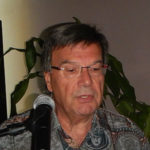D Saragaglia, O. Seurat, R Pailhé, J. Cognault, RC Rouchy, R Mader, B Rubens-Duval
(Grenoble)
Introduction : L’objectif de ce travail était d’évaluer les résultats à long terme de la prothèse totale de genou (PTG) e-Motion FP à plateau mobile ultra congruent mise en place avec assistance par ordinateur. L’hypothèse de cette étude était que les résultats à long terme étaient satisfaisants, voire supérieurs aux prothèses du marché.
Matériels et méthodes : Il s’agit d’une étude rétrospective mono centrique, mono opérateur consécutive basée sur 243 genoux chez 225 patients, âgés en moyenne de 71 +/- 5 ans (65-85) et opérés entre janvier 2002 et décembre 2005 pour une PTG de première intention. La série est composée de 222 gonarthroses, 7 arthrites rhumatoïdes et 14 ostéonécroses des condyles fémoraux.
Cent quarante-sept genoux étaient en genu varum (HKA183°). Le score de l’International Knee Society (IKS) moyen pré-opératoire était de 82,1 ± 25,1 points (14-158) avec un score genou de 36,1 ± 16,3 points (10-87) et un score fonction de 44,7 ± 14,8 points (0-90).
Toutes les prothèses ont été naviguées avec le système Orthopilot™.
Résultats : Cent vingt-neuf genoux chez 117 patients ont été revus avec un recul moyen de 135 ± 12,8 mois (120-165). Cent-huit patients ont été perdus de vue dont 76 décédés. Un seul descellement aseptique a été retrouvé à 10 ans de recul. Aucune complication à type d’usure ou de luxation du PE n’a été notée. Le taux de survie de la prothèse à 11,3 ans de recul moyen est de 99,2% avec comme critère de sortie le changement d’une partie ou de la totalité des implants pour descellement aseptique, usure ou faillite de la prothèse. Il est de 96,9%, si on inclut les changements partiels ou globaux pour descellement septique. Le score IKS moyen au dernier recul était de 189,5 ± 13,6 points (137-200) avec un score IKS genou de 96 ± 6 points (70-100) et un score fonction de 91 ± 10 points (55-100). L’angle HKA moyen est de 180 ± 2° (174-186°) avec 92,3% des prothèses alignées à 180° +/- 3° ce qui était l’objectif pré-opératoire.
Conclusion : Cette étude confirme notre hypothèse de départ, à savoir des résultats tout à fait satisfaisants de la PTG e-Motion FP à plateau mobile ultra-congruent à plus de 10 ans de recul moyen. La navigation avec l’Orthopilot, dont la précision n’est plus à démontrer, a probablement contribué à la qualité des résultats. Il faudra des résultats à un plus long recul pour démontrer la supériorité des prothèses à plateau mobile par rapport aux plateaux fixes.
Introduction : Mobile bearing TKA is currently one of the best mean to deal with knee osteoarthritis. Computer assisted knee replacement is used since more than 15 years but long term results of this technology are not well known. The aim of this study was to assess long-term outcomes of the e-Motion FP ultra congruent TKA with mobile-bearing platform, setup with computer assisted surgery. Our null hypothesis was that long-term outcomes were satisfactory (NICE criteria) or superior to the other implants design reported outcomes.
Material and methods : A retrospective monocentric study was conducted between January 2002 and December 2005, on 243 knees in 225 patients of a mean age of 71 +/- 5 years (65-85) who underwent a TKA of first intention. The series consists of 222 knee osteoarthritis, 7 rheumatoid arthritis and 14 osteonecrosis of the femoral condyles.
The mean preoperative International Knee Society (IKS) score was 82.1 ± 25.1 point (14-158). All prostheses were navigated with Orthopilot™ system.
Results : 129 knees in 117 patients were reviewed at a mean follow-up of 135 ± 12.8 months (120-165). 108 patients were lost to follow-up (76 dead). Only 1 aseptic loosening was found at 10 years of follow-up. No complication concerning wear or tibial plateau insert dislocation was noted. The mean prosthesis survival rate at 11.3 years was 99.2% with aseptic loosening, wear or failure of the prosthesis as an endpoint. The mean IKS score at the last follow-up was 189.5 ± 13.6 points (137-200). The mean HKA angle was 180 ± 2° (174-186°) with 92.3% of the prostheses aligned at 180° +/- 3° which was the preoperative objective.
Discussion-Conclusion : This study confirms our initial hypothesis, that the outcomes of the TKA e-Motion FP with ultra-congruent mobile-bearing were satisfactory at more than 10 years of follow-up. These results are comparable to other series of the literature at the same follow-up. Navigation, whose accuracy is well established, probably contributed to the quality of the results. Very Long-term outcomes need to be further investigated to demonstrate a superiority or not of mobile bearing devices.


